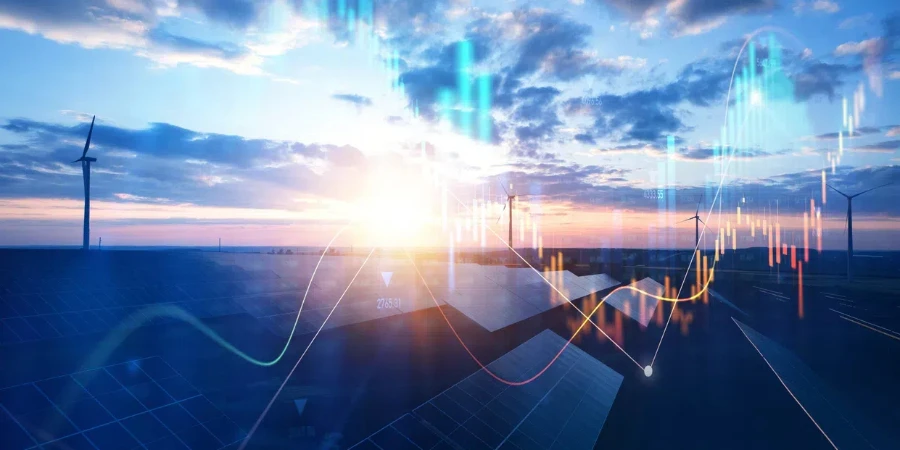New Agrisolar Handbook for farmers, solar developers and policymakers
Key Takeaways
- SPE’s Agrisolar Handbook aims to list the benefits of an evolving agrisolar sector in the EU
- It can help farmers create profitable revenue streams while enhancing biodiversity
- Through case studies, it shows the benefits of this innovative application in boosting crop yield and pollinator population
Solar power systems in an agricultural farm setting have the potential to boost the crop yield by up to 60%, depending on the crop type, season, regional climate and PV configuration, and can also lead to up to 60% increase in pollinators, according to SolarPower Europe’s (SPE) new Agrisolar Handbook.
That’s not all. Analysts also believe such a model can lead to 20% to 30% average water retention for interrow and elevated PV systems. Additionally, it is known to increase the soil carbon storage for solar grazing projects by up to 80%, according to the handbook which SPE terms is a key tool to support both the farming sector as well as solar developers as it addresses climate, energy, and food security concerns.
The agrisolar model also helps create additional income for farmers, through land lease payments from the developers, and/or by directly providing agricultural infrastructure for farmers, and/or through reduction on energy bills.
The handbook defines agrisolar (also referred to as agrivoltaics or agri-PV) as combining agricultural activities with solar PV electricity generation into existing agricultural landscapes, thus allowing the dual use of land for both food production and energy generation.
Highlighting the fact that the solar PV sector has developed on agrisolar over the last decade, the handbook identifies 10 agrisolar archetypes and case examples that can support profitable business models. These are:
- Elevated Crop-PV on arable land
- Interspace Crop-PV on arable land
- Eco-PV on both arable and permanent cropland
- Elevated perennial-PV on permanent cropland
- Interspace perennial-PV on permanent cropland
- Elevated PV with livestock grazing on permanent meadows and pastures
- Interspace PV with livestock grazing on permanent meadows and pastures
- Hay-PV on permanent meadows and pastures
- Elevated PV greenhouses on land under protective cover, and
- PV on farm buildings on land under protective cover.
All of these can be broadly categorized into the following 3 categories:
- Elevated Agri-PV where solar panels are elevated above the crops or livestock thanks to the metal structures
- Interrow Agri-PV where panels are placed vertically allowing the agricultural activity to take place between the rows of PV modules.
- Solar PV placed on artificial structures such as agricultural buildings, rooftops or greenhouses, where depending on the structure traditional or flexible modules can be installed
“This dual land-use model should allow us to achieve the energy transition and mitigate carbon emissions, while providing additional services and income to farmers, supporting their adaptation to climate change,” said the Chair of SPE’s Land Use and Permitting Workstream and Group Head, Amarenco, Eva Vandest.
The report writers stress that innovative solutions such as agrisolar are required in today’s complex environment when the European agricultural industry is facing challenges related to rising costs, uncertainties around income, and access to land, climate change, water scarcity, and other environmental challenges. Agrisolar can then help the sector enhance its resilience and sustainability.
Recommendations
The report writers believe that supporting the growth of agrisolar requires taking targeted actions to develop a good policy framework while creating coherence between the 3 areas of policymaking, namely agriculture, energy, and environmental policies.
These should also create the right revenue streams and create sufficient incentives for farmers to benefit by improving the value their land can create.
Their main recommendations to the European Union (EU) policymakers are:
- Clarifying that eligible agricultural land equipped with agrisolar can access Common Agricultural Policy (CAP) direct payments, based on an EU definition of agrisolar
- Develop relevant incentive schemes to recognize the value of multiple land-use
- Recognize and integrate agrisolar into environmental requirements or support schemes on agricultural land, including by gathering data on agrisolar projects’ environmental and nature benefits
- Improve permitting and grid connection procedures
- Support further research and innovation in the agrisolar field
SPE says the handbook offers case studies, best practices and regulatory considerations, to serve as a resource for stakeholders interested in agrisolar including farmers and solar developers. The complete handbook can be downloaded for free from SPE’s website.
It had previously launched an Agrisolar Best Practice Guidelines in 2021 to ensourage streamlined agrivoltaic project developments (see SPE Launches Agrisolar Best Practice Guidelines).
The release of this Agrisolar Handbook follows SPE and The Nature Conservancy policy paper on promoting nature-inclusive solar parks in the EU (see SPE Demands Policy Framework For Nature-Inclusive Solar Parks).
Source from Taiyang News
Disclaimer: The information set forth above is provided by Taiyang News independently of Alibaba.com. Alibaba.com makes no representation and warranties as to the quality and reliability of the seller and products. Alibaba.com expressly disclaims any liability for breaches pertaining to the copyright of content.




